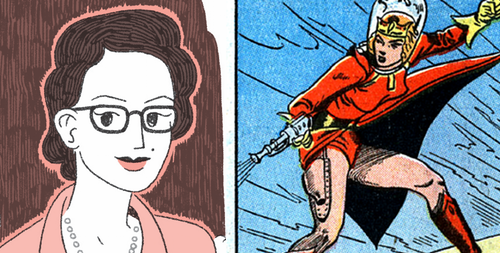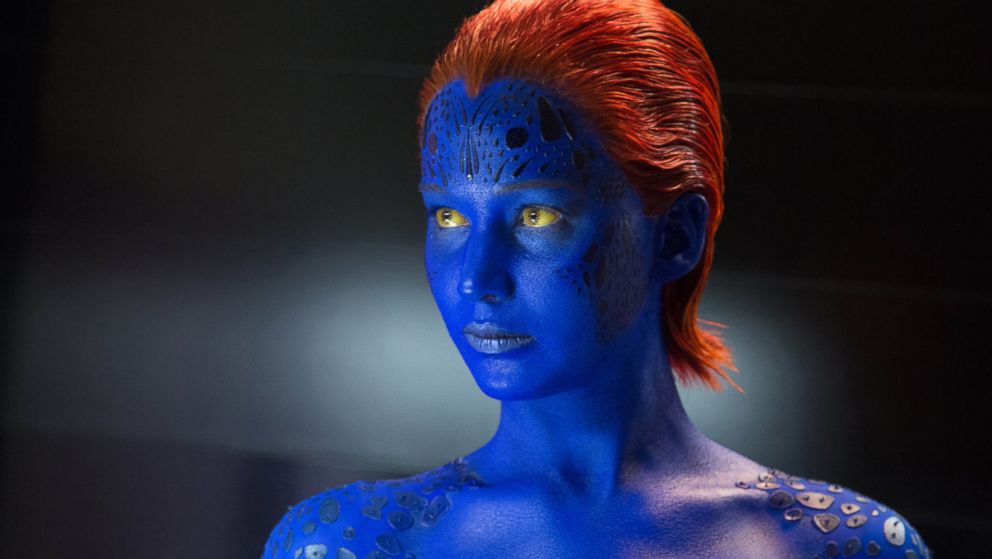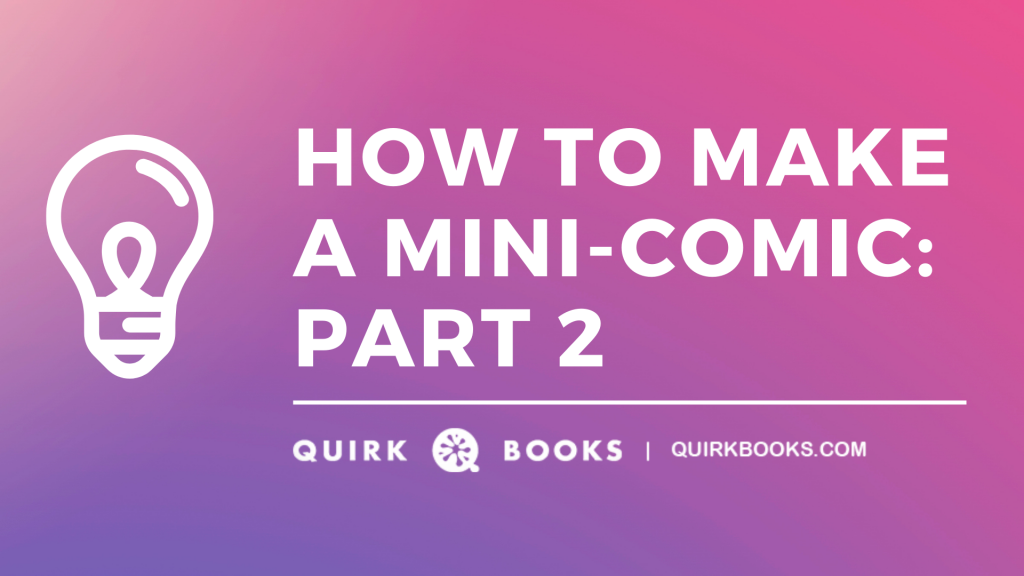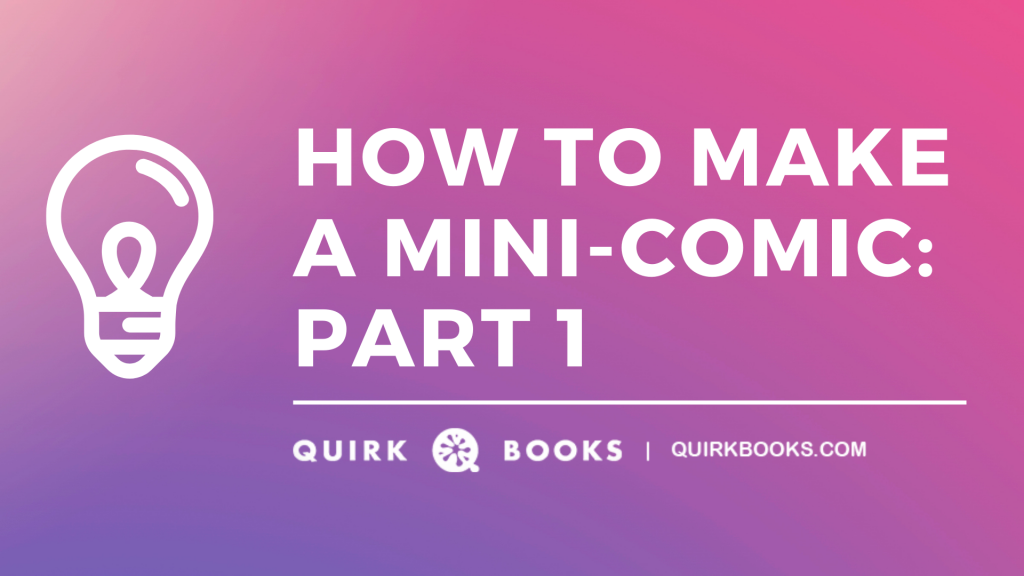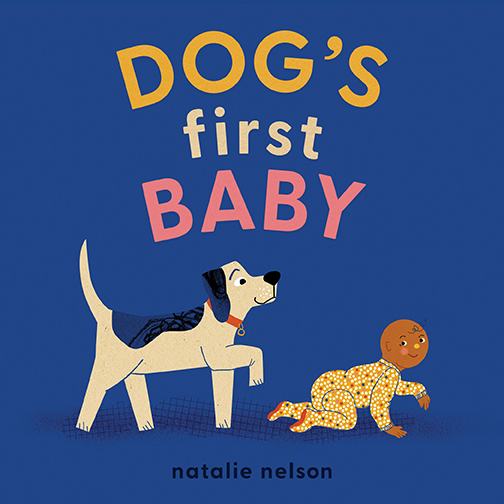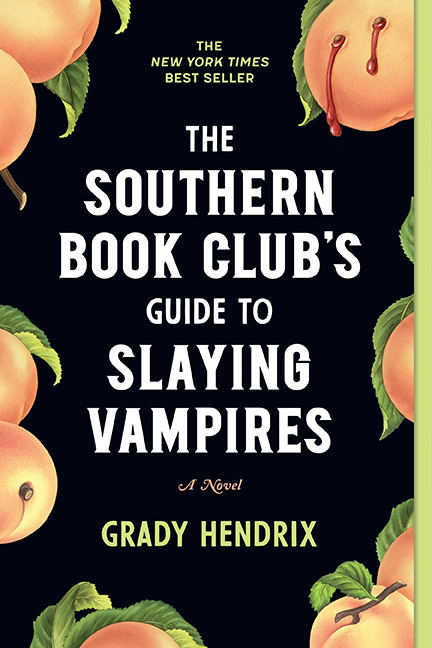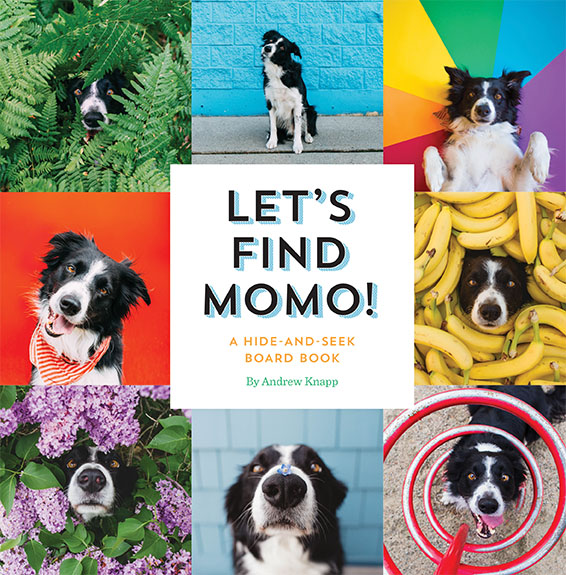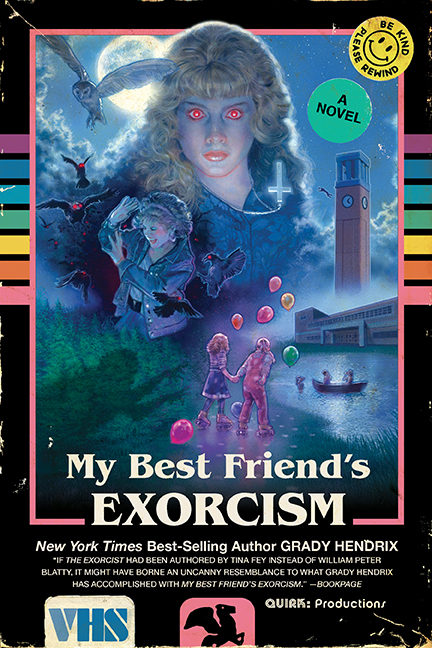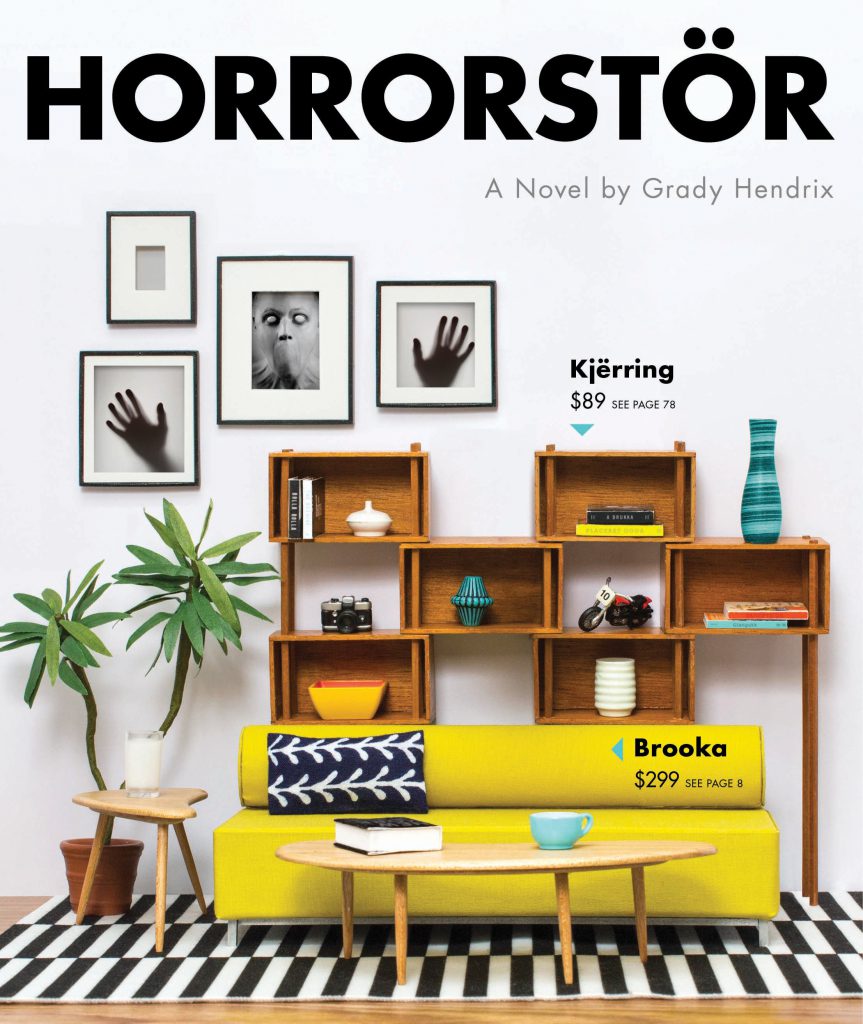Our Blog
Five Real-Life Wonder Women Meet Their Superhero Besties
Does real life imitate art, or does art imitate life? At Quirk Books we say, “Who cares, let’s have both!” That’s why our catalog includes Wonder Women: 25 Innovators, Inventors, and Trailblazers as well as The Spectacular Sisterhood of Superwomen: Awesome Female Characters from the History of Comics. And being that it’s Wonder Woman Week, we can’t help but wonder if the women featured in those two books would enjoy meeting each other and going on adventures and stuff.
Wonder Women illustrations by Sophia Foster-Dimino
Posted by Quirk Books Staff
A Look at Birth Mothers in Comics
[Movie still from X-Men: Days of Future Past, 20th Century Fox]
Comic books have most real-life situations beat in terms of parental complexity. For many characters, parental figures and/or mentors are in constant flux, and it’s not uncommon for a character to be raised by people other than their birth parents. With that in mind, we took a closer look at some of the more influential birth mothers of comic book history.
Posted by David Winnick
On the Spiral Staircase with Rick Chillot
Rick Chillot’s first job in publishing was in a corporate library, sniffing out story leads for writers and editors. He later went on to write and edit for magazines and books, worked on early Internet ventures during the heyday of AOL and Netscape, had a brief stint at a newspaper, edited a college’s alumni mag, survived as a freelancer for nearly a decade, and crept into Quirk Books four years ago as a writer/editor.


If you were stranded on Mars and could only have one book to read, what would it be?
I guess The Martian Chronicles, so that as I die from lack of oxygen or freeze to death, whichever comes first, I might delude myself into thinking that I’m on a better Mars. I like short stories as much as novels, so Ray Bradbury’s interconnected Mars stories are a perfect combo. I’m not sure I’d be in a reading mood, though, as my lungs collapse and my blood turns to ice. You do know that the average temperature on Mars is negative 80 degrees? I expect I’d use my last breath to curse whoever stranded me there. Probably Doogie.


Tell us about something cool you keep at your desk.
I have a small collection of notes and other things that people have given me over the years and I put them on display according to my mood. For example (in the picture) Kelsey gave me that doodle she did during a meeting, our managing editor left the note, a fake Buddhist monk gave me a fake prayer card, and Blair invited me to her music recital (I didn’t go).
What's your fandom?
Growing up I clung to all the things that would kill any chance I had of being popular or having friends: science fiction, monster movies, D&D, Star Wars and Star Trek, cartoons. But it all started with comics. Comic books were my first glimpse into a world where anything was possible, and where doing the right thing was the measure of a hero. Of course superheroes were a lot less murdery back then.
Check out Mini-Comics Week to take a dive into my fandom.


What's an unexpected talent or side effect you've picked up while working at Quirk?
Talent or curse? You decide. I can’t look at a book without conjuring in my head the discussions that led to the book title. And then in parallel I imagine the discussions we would’ve had about it here at Quirk. (Our decision is inevitably better.)
If you were a Quirk book, which one would you be?
I’d like to be Find Momo, exploring a beautiful world and making friends everywhere I go. But I’m more like The League of Regrettable Superheroes, trying to convince people that my dumbest flaws are the very things that make me so lovable.
Posted by Quirk Books Staff
Mini-Comics: The Wrap-Up
We've discussed why mini-comics are so amazing and how you can find your next favorite mini-comic, but have we said everything there is to say about mini-comics? Of course not! We hope we’ve given you enough motivation to explore the mini-comic universe further, but here's one more approach to making a mini-comic of your own.
Making Multi-Sheet Mini-Comics
We’ve told you how to make a mini-comic from a single sheet of paper here and here. But if you want your minis to have more pages, and to be structured more like full-size comics or little books, here are two methods to try, using multiple sheets of paper. How many sheets? You decide!
Multi-Sheet Mini-Comic Version 1: Saddle Stitching
If you’ve ever picked up a comic book in your life, you’ll get how this works. You just print your pages—two on each side of a sheet of paper—fold them in the middle, and stack them on top of each other like so:

Then staple everything together in the middle of the sheets. Depending on the size of the paper you’re using, you may need an extra-long stapler. (Some creators use sewing or other methods to attach the pages.) One thing to keep in mind with this scheme: When you put your art onto the sheets of paper, your pages have to be ordered so they’ll fall into the right sequence. For example, a three-sheet mini-comic (two pages of art on each side of the paper=six pages total) would need this arrangement:

Make a dummy so you can see where everything goes…or get use to pages being out of order.
Multi-Sheet Mini-Comic Version 2: “Perfect” Binding
This approach mimics that of a perfect-bound paperback book—the single pages are fastened along one side, except that in this case they’re stapled instead of glued (usually…but various mini-comics creators have used adhesives and every other method under the sun at some point, so feel free to experiment.) You just print your comic as single pages, stack them up in order, and the staple the side together. The more pages you have, though, the harder it will be to staple. And remember to leave extra space along the edge so the stapling doesn’t block your images.

For a more in-depth tutorial on making mini-comics, we refer you again to Jessica Abel’s excellent guide.
Thanks for sharing your love of mini-comics with us. To inspire us all, let’s wrap things up with a final survey of outstanding mini-comics, selected by the Quirk Comics Club.

A horizontal format is put to great use in this untitled story of a sailing ship by Alexis Frederick-Frost.
Don't be square: An oval shape is the perfect fit for a story of sinister bunnies by Rachel Bard.
Mind-Mapping by Will Dinksi unfolds in a mind-bending way.
Cutouts in this cool cover by David Mack practically demand that you open the book.
The cover of Hope Larson's Put On A Brave Face ties together with yarn; the interior has even more surprises.
The Beast Mother by Eleanor Davis is bigger than most minis, with a suitably tense cutout cover.
Mini-comics displayed are from the personal collections of Quirk Books Comics Club members and are intended as a small and subjective sampling of the ever-expanding universe of mini-comics.
Posted by Quirk Books Staff
How to Make A Mini-Comic: Part 2
Have you seen part 1 of how to make your own mini-comics? If not, take a quick look at it here, where we discussed the basics of creating your own mini-comic. Go ahead and review it, we’ll wait here. Hmm hmmm hmmm… *tuneless whistle* Dum de dum…hot in the office today. But it’s cool outside. Good day to wear one of those shirts with the zip-off sleeves…hey, let’s look at a mini-comic while we’re waiting…
Deep Cut by Hellen Jo reveals the story of hair care gone wrong…or right?
Oh, you’re back! Great. Well, today we have some more mini-comic making options for you. First, here’s an abbreviated reminder of the basic mini-comics recipe from part 1:
The Mini-Comics Order of Operations:
- Pick a format
- Make a dummy
- Draw and write the story
- Transfer the story to the page
- Fold a test comic (or staple or glue it or whatever it takes) and make whatever changes are needed.
Got it? Good. Let’s look at two more options for making single-sheet mini-comic options. Both are very simple, and the results are very book-like.
One-Sheet Mini-Comic, version 2
With this folding scheme, an ordinary sheet of copier turns into a little 6-page book (plus front and back cover). The secret to this magic trick is careful folding and cutting…and the more precise your folds and creases are, the easier it will work.
So first let’s make the folds. (Tip: Run the back of a spoon across each fold to make them nice and crisp). Do this:

Now your sheet of paper is nicely divided into its eight separate pages. So pick up your scissors and:

And, finally, fold the whole dang thing into a mini-comic:

Pretty easy right? Except for that confusing last part which is kind of hard to draw. So check out this video for a demonstration.:
Note that when you put your art on the page, one row will be upside down relative to the other (it helps to make a dummy or sketch version that you can reference while you’re working on it). For this kind of mini-comic, you can print all the pages on one side of your paper. But it’s also cool to add a full-page image on the flip side, creating a mini-poster for readers who unfold the whole thing.
The reverse side of Ian Sampson's Pep Talk mini-comic features a full-page poster.
One-Sheet Mini-Comic, Version 2:
This variations is similar to the six-pager, but it adds two more pages to the comic. Those pages are on the flip side of your paper, so two-sided printing is required.


Here’s a demo video:
It could be that the 8-page format is underutilized, because no one in our Club had an example in their collection of mini-comics. But this from a Quirks Comics Club member gives an idea of what the final product can look like. (Even people who aren't good with scissors are welcome in the Quirk Comic Club.)
Okay, that should keep you plenty busy (making mini-comics), but if you're looking for more mini-comic making ideas, want to learn how to find awesome mini-comics, or need a reminder as to why mini-comics are so amazing, make sure to check out our other mini-comic posts!
Mini-comics displayed are from the personal collections of Quirk Books Comics Club members and are intended as a small and subjective sampling of the ever-expanding universe of mini-comics.
Posted by Quirk Books Staff
How to Make A Mini-Comic: Part 1
We love yakkin' about mini-comics (we've already discussed why they're so awesome and where you can find them), but here's someone else's eloquent summary of why they're so great:
I've been reading comics since I was a wee'yin, drawing comics since high school and writing about comics since college. In all of this time, I have narrowed down the thing I love most of all in the entirety of the medium: comics written and drawn by amateurs, doing whatever they want and talking about the things which matter most to them.
Despite superheroes owning the vast majority of the market, comics are an inherently personal medium. The stories most creators tell, outside of the mainstream market, are intensely personal, even if they're not biographical.
And then there's the democratic nature of the distribution. An all-night copy center is all any creator needs to make their personal story, their vision, their perspective made available to the world at large.
Mini-comics are the apotheosis of the potential of comics, created by people whose formal skills tend to be uncluttered by formalism and unconstrained by convention. They are wildly valuable, and exceptionally lovable.
So says Quirk Books author Jon Morris, comics creator, and the operator of one of the oldest and smartest comics blogs on the Internet. As Jon notes, mini-comics are an excellent medium of creativity for anyone who's into comics, even if you’re not a professional or trained artist. Making a mini-comic to share with friends or family, or just for the fun of telling a story, is well within your grasp!
For inspiration: Illustrator Maritsa Patrinos's beautiful Curses and Blessings mini flips over to reveal blessings or curses, depending on your mood.
As we’ve seen, mini-comics can be as simple or complicated as the creator chooses. But for the most part the creation process is broadly similar. So here's a recipe for mini-comics that you can follow for your first mini-comic, or your five hundredth.
The Mini-Comics Order of Operations
Step 1: Decide on the format of your mini-comic. How will it be folded, how big will it be, what kind of paper will you use, how many pages will it have? You need to know this up front, because you want your story to fit the book.
Step 2: Make a dummy. It’s helpful to have a blank version of your mini-comic on hand so you can see how much space you have to work with, what the panels look like (are they vertical? horizontal? square? Something else?), and where the page turns are (it’s nice to pace the dramatic moments of your story so that turning the page reveals a surprise). You might make a quick sketchy version of your story right on the dummy, to see if your assumptions about the final product are correct.
Step 3: Create your story. Draw it, write it, color it, whatever and however you want to do it. Just make sure it will fit the format you decided on in step 1. If you’re drawing at a larger size and intend to shrink your art digitally—a tried-and-true comics strategy—make sure the proportion of your drawings are right for the pages of your mini-comic. That is, if your folded comic has panels 3 x 4 inches, the panels of your original art have to fit that proportion.
Step 4: Get your story onto the comic page. There’s lots of ways to do this. You might draw and write directly on your dummy, so you can photocopy that page to produce the mini-comic. Or scan your art and make a full-size document to print out and duplicate. Or maybe you do the whole thing digitally. Maybe you photocopy your drawings, cut out the panels, tape them in place, and use that as your master document for duplicating.
Step 5: Fold your mini-comic. This is the really hands-on part…but don’t worry, we’re about to show you some options. Some mini-comic formats require stapling, gluing, sewing, or other techniques for putting the pages together. But for now we’ll keep things simple.
Step 6: Make corrections. You’ve created your first mini-comic. Congratulations! But maybe it didn’t end up exactly the way you imagined. There’s a panel in the wrong place. One of the folds is in the middle of a drawing. The back cover is upside down. Don't worry, this is normal! Consider that first print to be test, and go back and make whatever adjustments are needed to put everything in its place.
Making a Single Sheet Mini-Momic: Variations
Lots of mini-comics are structured like little-sized version of standard comics, with multiple pages stapled together in the center, or like teeny books, bound at the spine. But an easy way to make your first mini-comic is to use single sheet of folded paper. Here are three options for that, all of which work will with a standard letter-sized 8 ½ x 11 sheet, the paper size that's beloved of offices copiers and home printers everywhere.
No-Fuss Version Mini-Comic:
Why not just draw a comics page, fold it up however you want it, and call it a mini-comic? Quick, easy, and frees up more time for drawing.
Some of the mysterious and compelling comics in this series by Justin Quinlan are single sheets of paper folded up and presented in a cool envelope. Simple but effective!
Accordion Fold Mini-Comic
This is another very easy option: Cut the sheet of paper into fourths (or thirds, or fifths, or whatever size you want). Then fold each strip accordion style. Each segment becomes one panel of your story. If two sided printing is an option for you, your comic can be twice as long. As a bonus, each sheet of paper yields four comics (or three, or five), multiplying your output.

Nine Lives, by Kristyna Baczynski, uses a simple accordion fold to present exquisite and beautiful illustrations.
Single Page Mini-Comic, Version 1: The Expanding Map Fold
Remember when people used to keep folded-up paper maps in their cars, instead of relying on GPS and their phones? Probably not, but this folding scheme sort of recalls those old-timey road maps. The format is fairly easy to use, yielding a four-page comic with a front and back cover. As the reader unfolds the comic, the pages get bigger and bigger, giving you a chance to really bump up the drama. There are some production challenges; when you place the art on the page, some of pages will be upside-down relative to the others, so maybe do a test first to make sure your artwork is oriented properly. And if you want to use the last (and biggest) page, you'll need to do two-sided printing.

Check out this mesmerizing video to see how to fold it:
Just dive in and make some mini-comics!" says Kelly Bastow, aka Moosekleenex, illustrator of The Fangirl's Guide To The Galaxy, and numerous comics. "Mini-comics can be about anything, they can be fact or fiction, any type of art style, busy or simple." Kelly and writer/artist Caitlin Major are the creators behind one Quirk's favorite webcomics, Manfried The Man. Explore other folding and layout options for making your own masterful mini-comics here and here!
Mini-comics displayed are from the personal collections of Quirk Books Comics Club members and are intended as a small and subjective sampling of the ever-expanding universe of mini-comics.
Posted by Quirk Books Staff
